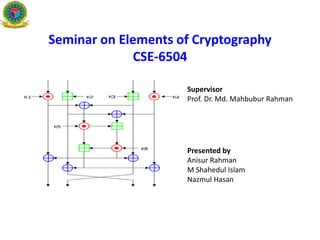This document summarizes a seminar on quantum cryptography. It begins with an overview of cryptography and introduces quantum cryptography as a way to securely distribute encryption keys using the laws of quantum mechanics. It then covers the theoretical background of quantum cryptography, including how the Heisenberg uncertainty principle and no-cloning theorem enable secure key exchange. The document outlines the BB84 quantum key distribution protocol and discusses various attacks and vulnerabilities and how they can be addressed. It concludes by discussing the current state and future prospects of quantum cryptography technology.








































